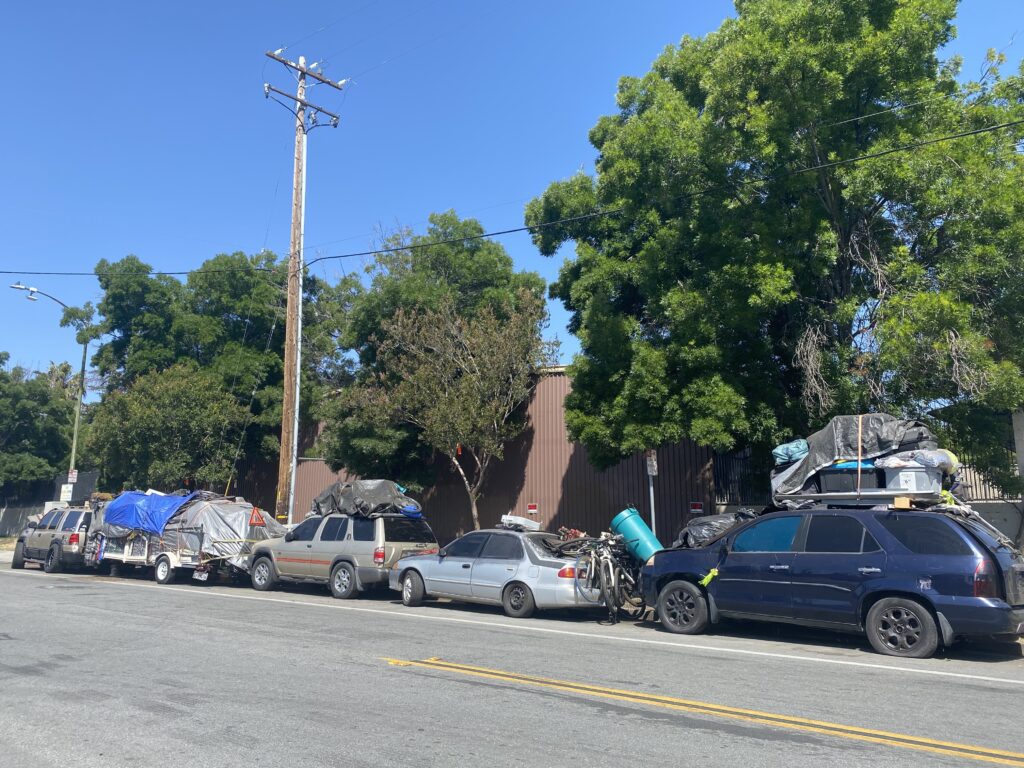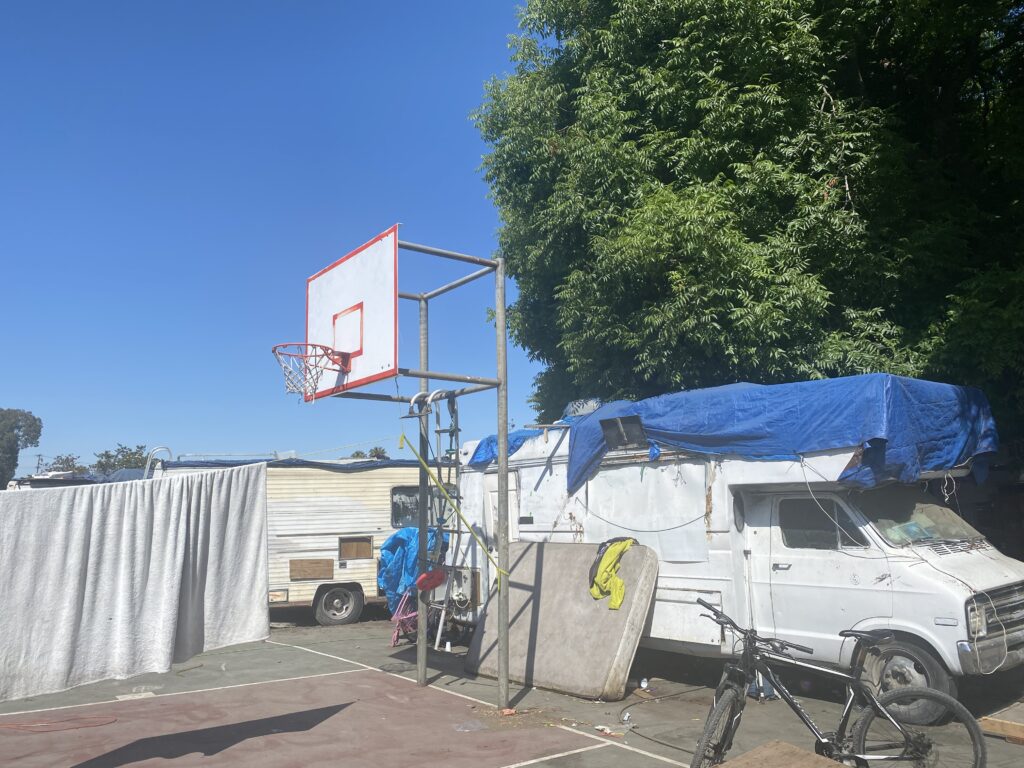SAN JOSE’S HOMELESS OUTREACH EFFORTS have been more concerned about volume than outcomes, and there is little accountability when homeless support nonprofits did not provide adequate services.
A city audit of San Jose’s homelessness services released in October found some nonprofits did not meet performance targets or reporting requirements, and the Housing Department failed to require corrective action plans. These findings echo a 2024 state audit which showed San Jose could not identify all of its expenditures on homeless support, nor does it adequately measure the effectiveness of its systems.
The city auditor recommends the housing department improve its grant monitoring process by updating its oversight procedures and having consistent target goals.
“It poorly reflects on the city internally and how they work with the providers,” Todd Langton, founder of nonprofit Agape Silicon Valley, told San José Spotlight. “There’s lack of coordination, there’s lack of accountability, lack of processes and too much emphasis on volume versus outcome.The report card is a D+ at best.”
City Auditor Joe Rios reviewed four agreements with homeless support nonprofits totaling $14 million, but only cited three examples. PATH did not meet targets for referrals to housing and the number of people it conducted outreach with, citing a lack of workers. LifeMoves did not meet case management goals at the Santa Teresa safe parking site, which the nonprofit said was due to hiring issues. HomeFirst failed to meet its goals at the Bernal and Rue Ferrari tiny home sites, including not providing life skills workshops to residents for multiple quarters. It cited having a limited amount of staff as the reason.
These homeless service providers are among the top 10 contractors within Santa Clara County.
 Eight lived-in vehicles parked on Rose and Lyndale Avenue in East San Jose. File photo.
Eight lived-in vehicles parked on Rose and Lyndale Avenue in East San Jose. File photo.
Hindered housing assessments
The audit shows housing department workers did not conduct site visits during the term of the grants, limiting an accurate assessment of the service provider’s performance.
“We should note that though Housing grant analysts documented service provider shortcomings in quarterly reports, none were placed on corrective action plans,” the audit reads. “The service providers’ work was generally assessed as adequate despite these performance issues. In one instance, the work was assessed as ‘inadequate,’ but a corrective action plan was not required.”
Housing department spokesperson Sarah Fields said oversight is critical to the success of the city’s work in reducing homelessness. But scarcity in outreach workers, limited affordable housing and other issues makes the work more difficult.
“A lack of readily available professional staff time, housing and services all create challenges here,” Fields told San José Spotlight. “Continuing work with nonprofit service providers to serve San Jose, while also bringing more services internal to be performed by city staff, will increase accountability.”
To improve grant monitoring procedures, the housing department said it will provide annual training for workers to identify performance gaps and reinforce requirements to take notes during site visits. It plans to implement this by June 30, 2026.
In addition, the city’s overemphasis on targeting outreach to large encampments, creeks and high priority areas have left homeless people outside the targeted sites without support, according to the audit.
At the time the audit was conducted, San Jose only had 30 outreach workers to serve the city’s 5,500 unsheltered homeless population, a ratio of 180 homeless individuals per outreach worker.
 San Jose swept hundreds of homeless people out of its largest encampment, located in Columbus Park, earlier this year. File photo.
San Jose swept hundreds of homeless people out of its largest encampment, located in Columbus Park, earlier this year. File photo.
Housing hot spots
Because of the large number of unsheltered homeless people, San Jose created a targeted outreach and engagement program to concentrate outreach efforts on a handful of hot spot areas. When an encampment sweep or RV tow occurred that didn’t fall within outreach range, workers rarely made contact with homeless individuals.
People residing in hot spots often received offers of housing first, whereas those outside of these areas — who followed the rules and kept their encampments clean — were ignored.
“These are missed opportunities to engage with unhoused residents and may undermine trust in the city,” the audit said. “Additionally, (the targeted outreach program) … may create unintended incentives for unhoused individuals to move into these areas to access housing referrals and supportive services, whereas the city is actively trying to reduce the impacts of homelessness in these locations.”
The audit shows the housing department did not request outreach workers make contact with these areas prior to a sweep. When the City Auditor’s Office examined outreach cases submitted by Parks, Recreation and Neighborhood Services, it found outreach requests were closed without being assigned, or there was no action taken on the request for months.
“Limited geographies for targeted outreach within San Jose reflect our finite resources and areas of greatest need,” Fields said. “However, as a city dedicated to further alignment and coordination, the audit results will assist the housing department, in partnership with the departments of transportation and parks, recreation and neighborhood services, in achieving better coordination in service to the entire city.”
The latest homeless census conducted in January reported 6,503 homeless residents, of which 3,950 people were living on the streets. More people are falling into homelessness for the first time, and chronic homelessness across Santa Clara County has increased 114%.
“The state’s findings were broad, offering a snapshot of inefficiencies statewide, but they did not provide the level of detail necessary for San Jose to take corrective action,”
Councilmember Bien Doan
San Jose’s audit follows on the heels of a 2024 state audit which gave the city seven recommendations to improve how it tracks expenses and measures effectiveness for its homeless services. The city has met two of those goals and is behind on five. San Jose missed the September 2024 deadline to implement all recommendations.
The two recommendations fully implemented include asking the city to set more robust annual goals that are now provided in the Consolidated Annual Homelessness Report, which combines information from multiple city departments to provide a comprehensive overview of homelessness. The other is better monitoring of temporary housing utilization through the city’s new homeless data dashboard.
The 2024 state audit also looked at the city homelessness spending from 2020 to 2023. San Jose spent more than $302 million on homeless supportive services, about $120 million of which came from the state and federal governments. That money went toward numerous temporary housing projects, such as $125.5 million from the state through Project Homekey for temporary and permanent housing. But the city could not identify all of its expenditures.
Councilmember Bien Doan, whose District 7 include large swaths of homeless residents, said conducting a city audit was necessary to know exactly where tax dollars are going, especially when its hard to see progress in places like the Tully Community Ballfields. Doan pushed for a city audit after the state’s findings.
“The state’s findings were broad, offering a snapshot of inefficiencies statewide, but they did not provide the level of detail necessary for San Jose to take corrective action,” Doan told San José Spotlight. “A city-specific audit allows us to dig deeper into our own programs, contracts and internal structures to uncover exactly how funds are being used, who is receiving them, and whether those expenditures align with our legal and policy obligations. When hundreds of millions of dollars are in question, the city has an obligation to demand transparency and ensure that every dollar truly supports effective solutions for homelessness in San Jose.”
Contact Joyce Chu at joyce@sanjosespotlight.com or @joyce_speaks on X.


